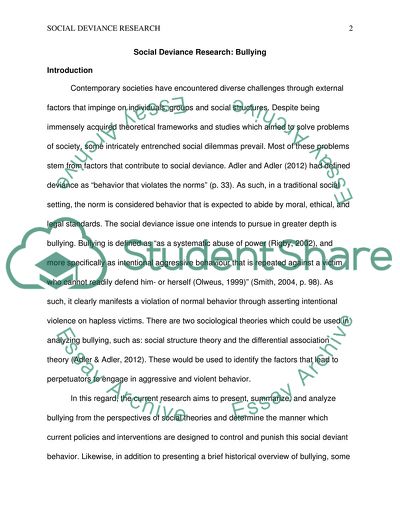Cite this document
(Social Deviance: Bullying Research Paper Example | Topics and Well Written Essays - 2500 words, n.d.)
Social Deviance: Bullying Research Paper Example | Topics and Well Written Essays - 2500 words. Retrieved from https://studentshare.org/social-science/1805534-social-deviance-research
Social Deviance: Bullying Research Paper Example | Topics and Well Written Essays - 2500 words. Retrieved from https://studentshare.org/social-science/1805534-social-deviance-research
(Social Deviance: Bullying Research Paper Example | Topics and Well Written Essays - 2500 Words)
Social Deviance: Bullying Research Paper Example | Topics and Well Written Essays - 2500 Words. https://studentshare.org/social-science/1805534-social-deviance-research.
Social Deviance: Bullying Research Paper Example | Topics and Well Written Essays - 2500 Words. https://studentshare.org/social-science/1805534-social-deviance-research.
“Social Deviance: Bullying Research Paper Example | Topics and Well Written Essays - 2500 Words”, n.d. https://studentshare.org/social-science/1805534-social-deviance-research.


